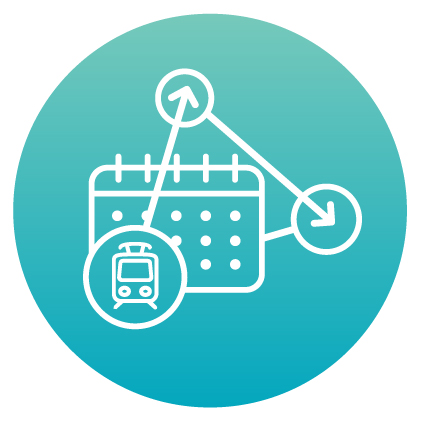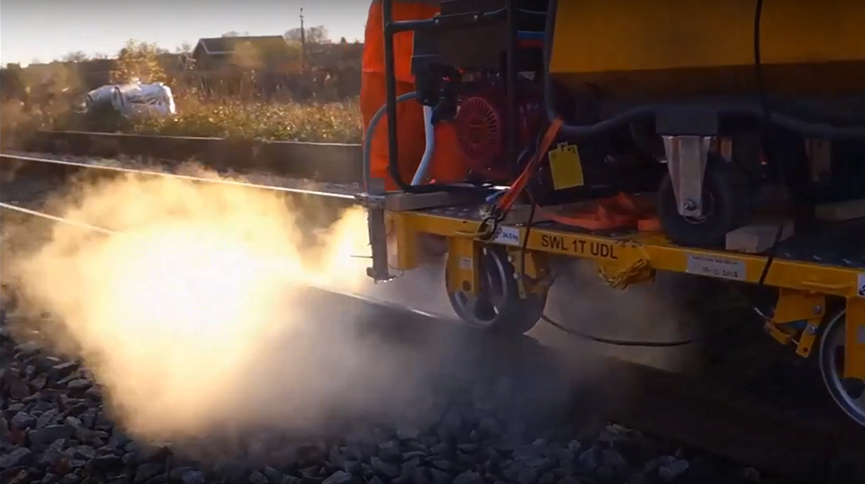Using cryogenic rail head cleaning to tackle leaves on the line

Low adhesion between rail and wheel can be caused by moisture on the rail mixing with the film produced by ‘leaves on the line’ or other contaminants, such as rust or grease. It can be particularly severe in autumn, but low adhesion can occur at any time of year, resulting in disruptions to passenger journeys. It can also cause safety risks, such as signals passed at danger and station overruns.
The University of Sheffield has developed ‘Cryogrip’ a method of cryogenic or ‘dry ice’ cleaning that effectively removes oxide and leaf contamination from rail. This novel technology fires cryogenic pellets at the railhead, which shock the contaminant layer that forms on rails, causing it to crack and de-bond. The process leaves no residue and other track components, such as switches and crossings, can be treated. The system itself can fit into a small area, meaning it can be used where rail head treatment trains cannot reach.
The initial research, which was funded by RSSB, has gone from small and full-scale lab testing to being implemented in the field. In an Innovate UK First of a Kind project, the University of Sheffield partnered with Northern and NEXUS Tyne and Wear Metro to test a passenger train prototype and a Rail Head Treatment Train (RHTT) version. The road-to-rail vehicle system for high power “local” cleaning has been shown to remove leaf layers and other contaminants, and braking tests conducted on cleaned rail have shown stopping performance close to those in dry conditions. The RHTT system piloted with NEXUS was used for high power cleaning over longer distances and resulted in a considerable reduction of delay minutes on the network.
Recent funding from Network Rail’s Performance Innovation Fund was used to develop an onboard passenger train system that will enable frequent lower power cleaning to help reduce contamination layers. This was tested during Autumn 2021 at speeds of over 60mph. A follow-on project with ScotRail, which is taking place in Autumn 2022, aims to integrate machine learning into the system to predict low adhesion and enable smarter, more targeted, cleaning.
November 2022
Back



